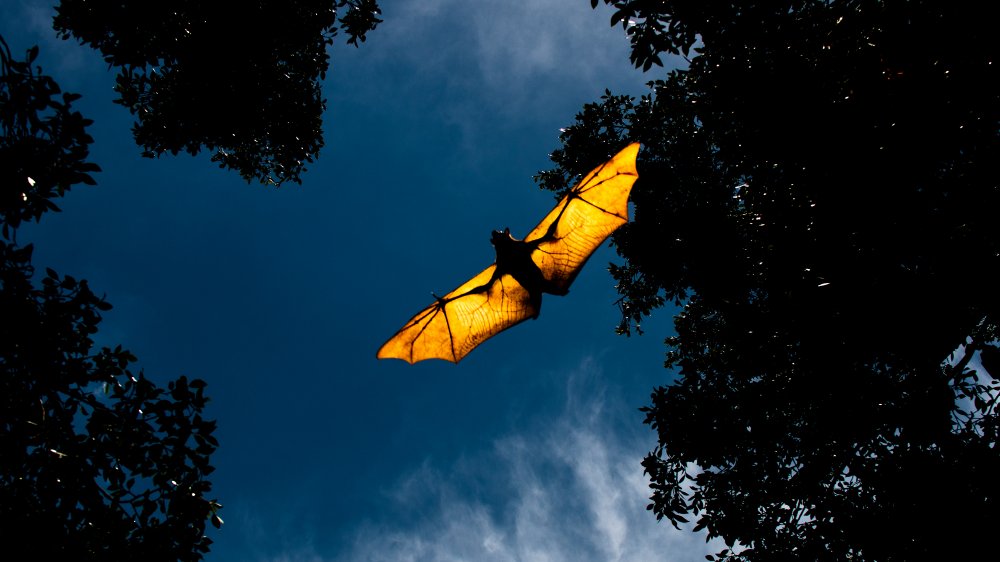The Real Reason Bats Carry So Many Diseases
Forget Bruce Wayne, who carries lots of gadgets and emotional baggage. The really impressive bat-creature weighs in at less than an ounce. It's the Chinese horseshoe bat, and by some estimates, according to the New York Times, it's a possible source of the coronavirus.
The Times quotes Dr. Peter Dascak, president of EcoHealth Alliance, and a scientist who's spent the last 15 years studying diseases that make the jump from one animal to another, including human beings. Dr. Dascak says these diseases are called zoonoses. While that might sound like an old Michael Crichton novel, it's a not uncommon phenomenon. Says NPR, both SARS (Severe Acute Respiratory Syndrome) and MERS (Middle East Respiratory Syndrome) epidemics originated with a bat coronavirus, as did a "highly destructive" epidemic in pigs. That particular iteration of bat-dom is common, he says, and it, along with its bat-cousins, serves as a carrier for a number of illnesses, including, but not limited to, ebola. (The bats are thought to be a "natural reservoir" for that one.) Usually bats get blamed for carrying the rabies virus (and yes, rabies is also a virus), but unlike with the other bat-shenanigans, the bats actually become ill. In other instances, they're simply carriers.
Bats are amazing, even when they make us sick
You might think that bats are kind of cool (and they are) for lots of reasons (and there are lots of reasons): it's a mammal that flies; it uses sound waves to track locations, flight patterns, and prey (insects, and lots of them); there are huge variations in size among species; and they make for superb extras in lots of Halloween TV specials (Ruh-roh!). But for those in the know, bats are also tiny flying wonders because of their immune systems, which allow them to fight off a variety of sickness that can then be transmitted to other animals, including humans.
One theory is that their adaptation to flight has also resulted in a reduced system response to viral organisms. Their systems respond, but it's a reduced response that allows them to peacefully co-exist with a number of otherwise invasive bugs.
Before you go after your local bat population, remember that bats aren't the only ones. Other animals, such as "rodents, primates, and birds also carry diseases that can jump and have jumped to people," says the Times. And one of the primary ways these conditions make the jump is by humans eating bats. Humans "have encroached on the lives of bats, not vice-versa." So put down the bat-menu and maybe fix a nice salad instead.

